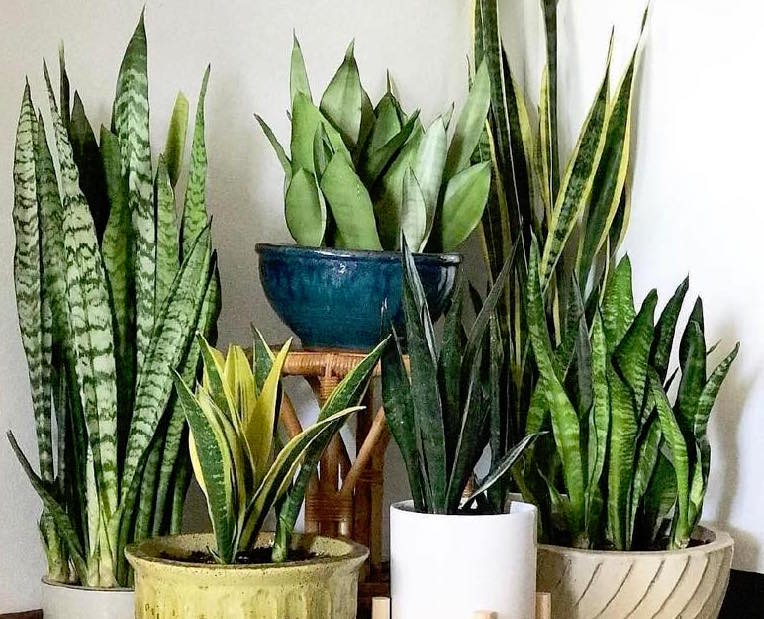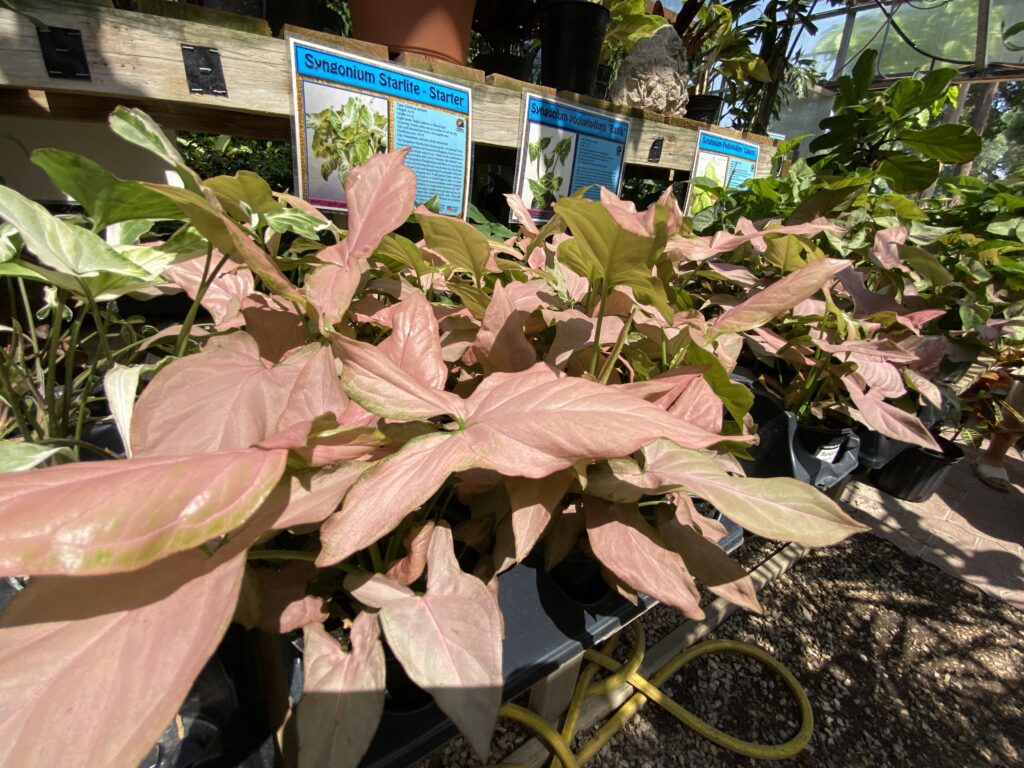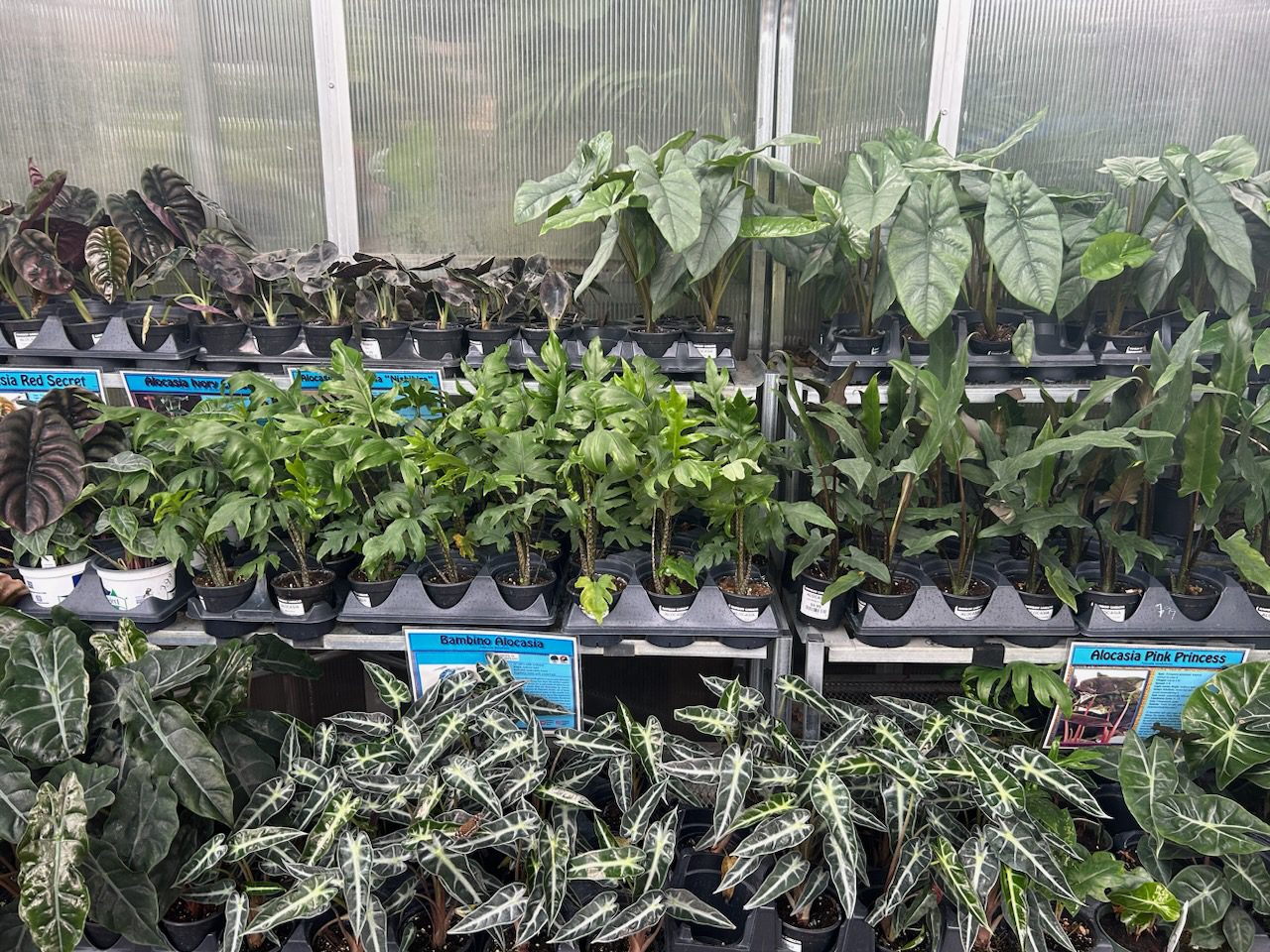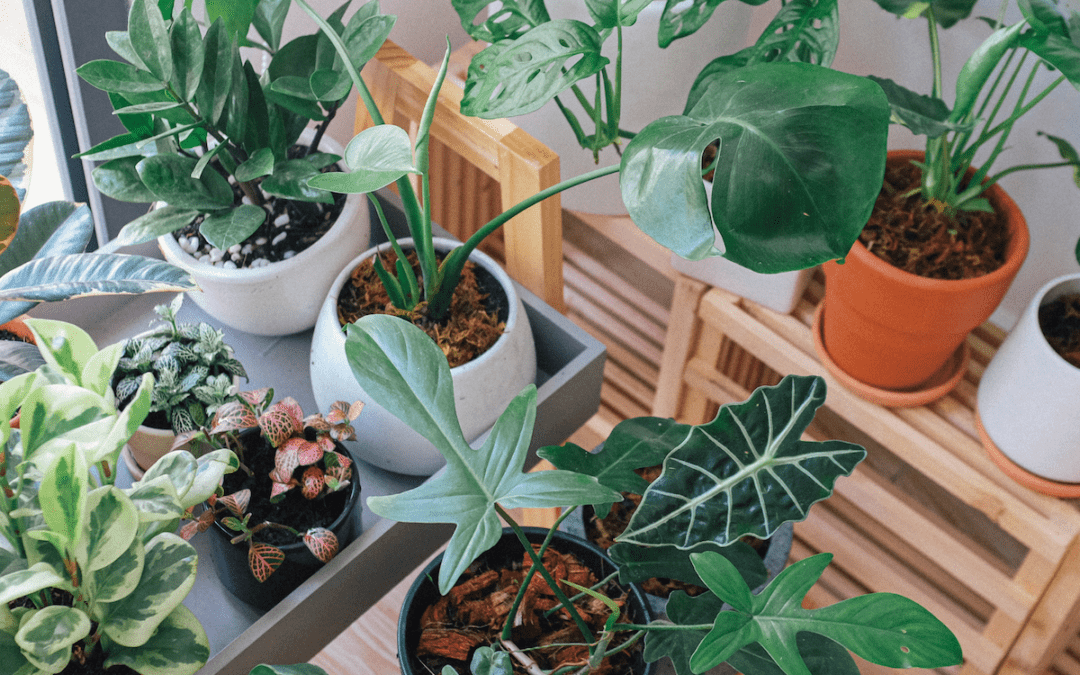How are you guys holding up this week? It’s been hot, man! These are the type of weeks that I get very tempted to look out the window at my plants and say, “You’re on your own.” Due to the strong desire to stay indoors, but still having a hankerin’ for some gardenin’, I’ve found myself perusing the greenhouses that display the houseplants more than I normally do.
I tend to save my creative gardening for outside plants and end up sticking to my old favorites when it comes to houseplants. I’m okay with saying that I tend to choose houseplants that thrive on a little neglect. For the most part I’m happy with my snake plants, zz plants and pothos. They need little care and can go for umpteen days without watering (although the pothos gets mad and starts to turn yellow when I’ve really pushed it).

The heat has got me looking at houseplants differently lately, and walking through the greenhouses this week has been inspiring. I’m ready to branch out (pun intended) and turn over a new leaf. Our houseplant selections are incredible. Some of the specimens are downright intriguing! I’m coming around to ‘gardening in the great indoors’. I’m going to learn about more houseplant options this summer; wanna join me?
Today, I’ll highlight a few houseplants that caught my eye, and give you a quick rundown on them. But you really should visit yourself, because beauty truly is in the eye of the beholder when it comes to plants. See what specimen calls out to you to take them home.

4 Houseplants to Fall in Love with during San Antonio Summers
Syngonium podophyllum (a.k.a. Arrowhead Vine): I found multiple varieties of these ‘climbing epiphytic’ plants. Look for options like ‘Batik’, ‘Confetti’, or ‘Starlite’. In their pots at the nursery, they seem like smaller houseplants, but they can grow to lengths of around 3-6′ given the right support (moss pole) or when allowed to cascade from a hanging basket.
Bright, indirect light is best and produces fastest growth and most vibrant foliage color. Water when top 2″ of soil is dry. A quality potting soil full of organic matter is a great choice for this houseplant.

Phlebodium aureum (Blue Star Fern): This houseplant had me at first glance of its chalky-blue/dusty green fronds that stood out against a sea of regular green in the fern section. When I realized it only had to be watered once about once a week, I was sold (remember, I’m a sucker for a plant that can take a little neglect). While it may be an easy-care plant, it looks exotic.
This houseplant doesn’t need to hog up your window space either. It’s content on a table receiving the indirect light from there. Too much sun exposure may give you crispy tips on its long (avg. 2′) fronds. The larger the pot, the larger the fronds get (up to 4′). It’s a beauty.

Alocasias (a.k.a. elephant ears): Who knew these tuberous perennial plants are actually pretty easy to grow? There are around 79 recorded species of Alocasias and while each one will have their own preferences and growth habits, for the most part, they like the same things.
These houseplants prefer bright but indirect light (I see a pattern here with houseplants), warm temperatures, medium to high humidity, and relatively moist soil (again, water when top 2″-3″ of soil is dry). If you’re able to keep an eye on soil moisture, you have a great range of styles, colors, and patterns to choose from. Grown as houseplants, alocasias prefer to be a little rootbound so don’t rush to repot them right away. When you do repot, only go up about one size.

Microsorum musifolium (Crocodile Fern): Another epiphytic plant that I have fallen in love with. I mean, just look at those fronds! They actually look like they are made out of a leathery old crocodile (though no one would actually want that to happen).
This plant is toted as ‘not requiring an extensive or complicated care regime’. Whoot whoot, sign me up! This is a tropical houseplant that prefers living in temps ranging from 65-75 degrees. I like those temperatures too! Neutral to slightly acidic, well-draining potting soil is a good choice. Can you guess what kind of light is preferred? If you said, bright, but indirect light, you would be correct. Unlike alocasias, the crocodile fern does NOT like to be rootbound, as this can actually stunt its growth, so be ready to give this one room to grow…you know…like a crocodile.
My advice to you is to take your time when looking through the greenhouse. Unique, rare, or just fascinatingly interesting options are tucked in everywhere. You’ll find the plant that calls to you and I’ll let you know which one(s) called out to me too.
~The Happy (in the air conditioning) Gardener, Lisa Mulroy

